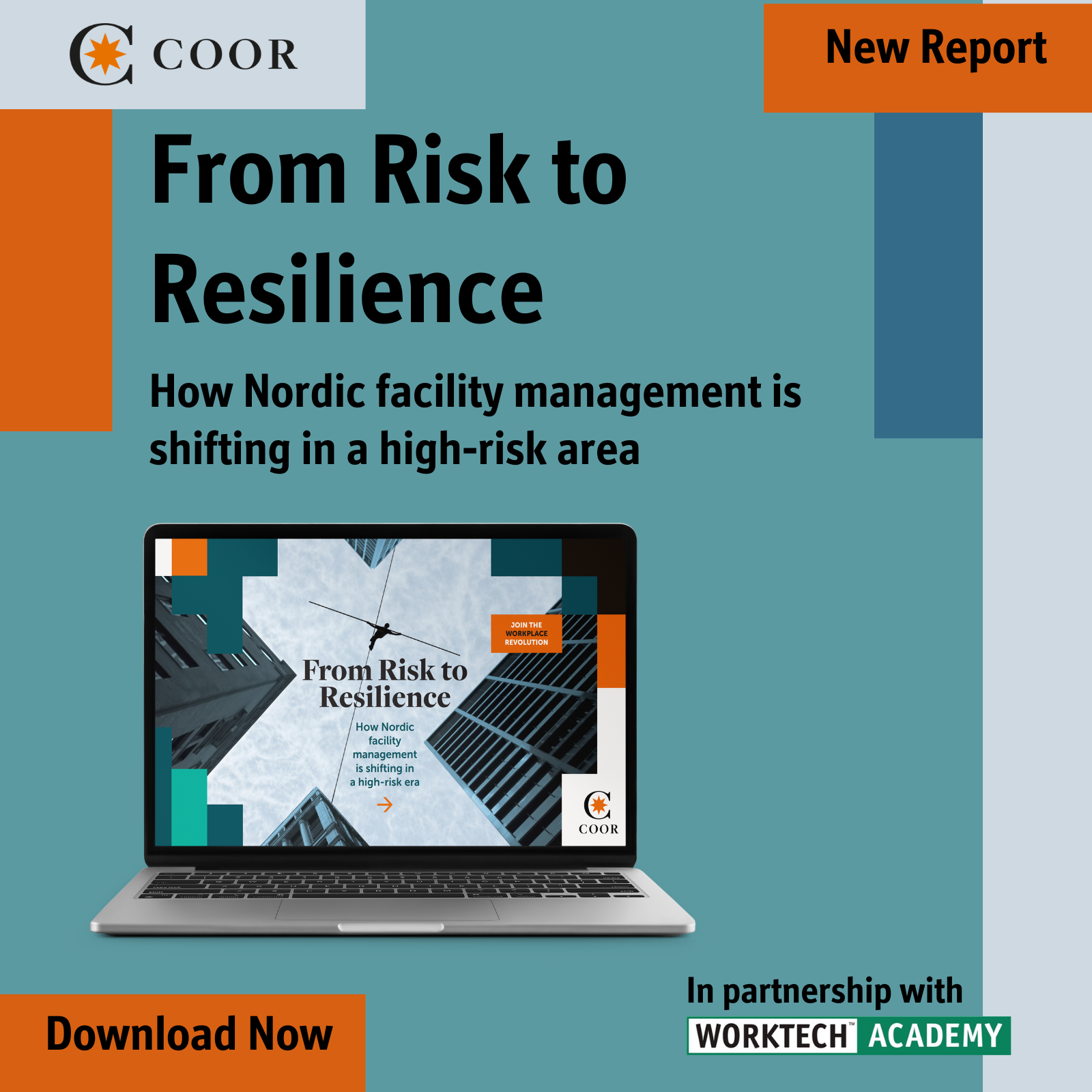Light and day: the complexity of combining natural and artificial light
Circadian lighting is increasingly being used in offices to mimic the natural rhythms of daylight, but new research shows that supplementing natural light with electric sources is not easy to achieve
New research studies in lighting design and technology for offices reveal that our relationship with light is clearly complex, especially when natural and artificial light are combined.
Designers long ago learned of the profound and desirable effects natural light has on our stress levels, mood, cognitive performance, creativity, and ability to get along with other people, but the sun will set sooner or later on every workplace on earth and then artificial lighting prevails.
Biological impact
Circadian lighting, which closely mimics the daylight spectrum and is designed to have a biological impact on the human circadian system, is frequently used in workplaces. An Italian study led by Giovannini and colleagues (in press) looked at the influence of integrative lighting that combines daylighting with electric light.
In the spaces analysed, the researchers found that the position of the desk played a key role under daylighting conditions: only desks within two metres from the window were able to meet the circadian recommendations, and supplementing with artificial lighting did not always provide a sufficient contribution to meet the circadian recommendations across the full area.
Another new lighting study from the University of Cambridge and MIT (Pan and colleagues 2025) probed worker experiences in hybrid offices. This research determined, after reviewing data gathered over a year at a London coworking site, that ‘seats with the highest daylight exposure are not necessarily the most occupied ones . . . clusters exhibiting higher illuminance levels (a combination of both daylight and artificial light) tend to show higher occupancy.’
Earlier evidence
New evidence in lighting builds on earlier scientific findings. Peeples (2018) shared why circadian lighting is so important: ‘Too little light from the blue end of the visible spectrum during the day, or too much of that same light at night… can cause an internal clock to slip off beat, setting off a cascade of potential consequences. These include not just poor sleep, reduced concentration, and contrarian moods, but over the long-term, increased risk of depression, diabetes, and cancer.
Veitch, Stokkermans, and Newsham (2013) determined that, ‘People who appraise their lighting as good will also appraise the room as more attractive, be in a more pleasant mood, be more satisfied with the work environment, and more engaged in their work.’ And Kombeiz and Dietl (2019) reported that greater satisfaction with light positively influenced judgement of others.
Enhanced creativity
For quite some time, we’ve known that creativity is enhanced by warmer light (around 3000 K) compared to cooler light (4500 K, 6000 K, etc.) while concentration is better under cooler light (around 6000 K – study by Weitbrecht, Barwolff, Lischke, and Junger (2015).
Lasauskaite and Cajochen (2018) learned that working in different lighting conditions can require different amount of effort i.e. higher effort under warmer light and lower under cooler light.
In a later study, Lasauskaite, Richter and Cajochen (2023) reported that a higher CCT (correlated colour temperature) of light reduces the amount of effort invested during cognitive tasks for which hearing is needed. The research team recommend that lower CCT of light should be avoided in learning and work contexts, as it might lead to higher effort and cardiovascular reactivity that may contribute to the development of cardiovascular health problems.
Wessolowski, Koenig, Schulte-Markwort and Barkmann (2014) looked at empirical studies and found an improvement in communication and an increase in prosocial behaviours results from using warm lighting as opposed to cool, dimmed lighting in work environments. In general, brighter light has been linked to enhanced cognitive performance (Soler, Robison, Nunez and Yan, 2018).
Reading comprehension seems better at 500 lux than at 200 or 800 lux (Lin, 2014) and Steidle and Werth (2013) link lower levels of lighting intensity (they tested 150 lux) to improved creative performance and brighter light (1,500 lux) to a boost in analytical performance. Kombeiz, Steidle, and Died (2017) determined that ‘dim warm light may foster collaborative conflict resolution’.
Read more of the latest research insights from Sally Augustin in Research Roundup, her regular column in the Innovation Zone for WORKTECH Academy members and partners here.
Read Sally Augustin’s full article on the Innovation Zone here.
Research sources
- Giovannini, V. Lo Verso, L. Valetti, J. Daltrozo, and A. Pellegrino. ‘Analysis of Integrative Lighting Through Field Measurements and Annual Daylight Simulations in Offices.’ Lighting Research and Technology, in press.
Andreas Haga. 2018. ‘Eco-Label Effects in the Built Environment: Does Labeling a Light Source Environmentally Friendly Influence Performance and Judgment?’ Sage Open, vol. 8, no. 2, no. pagination.
Olga Kombeiz and Erik Dietl. 2019. ‘Light as a Positive Situational Cue at Work: Satisfaction with Light Relates to Judgements of Other’s Warmth and Competence.’ Ergonomics, vol. 62, no. 8, pp. 995-1007.
Olga Kombeiz, Anna Steidle, and Erik Died. 2017. ‘View It In a Different Light: Mediated and Moderated Effects of Dim Warm Light on Collaborative Conflict Resolution.’ Journal of Environmental Psychology, vol. 51, pp. 270-283.
Ruta Lasauskaite and Christian Cajochen. 2018. ‘Influence of Lighting Color Temperature on Effort-Related Cardiac Response.’ Biological Psychology, vol. 132, pp. 64-70.
Ruta Lasauskaite, Michael Richter, and Christian Cajochen. 2023. ‘Lighting Color Temperature Impacts Effort-Related Cardiovascular Response to an Auditory Short-Term Memory Task.’ Journal of Environmental Psychology, vol. 87, 101976.
Chin-Chiuan Lin. 2014. ‘Effect of Noise Intensity and Illumination intensity on Visual Performance.’ Perceptual and Motor Skills, vol. 119, no. 2, pp. 441-454.
Jiayu Pan, Tze Cho, Maoran Sun, Koen Steemers, and Ronita Bardhan. 2025. ‘Environmental and Spatial Dynamics in a Flexible Workspace for Hybrid Work: A Data-Driven Design Framework.’ Building and Environment, vol. 270, 112544.
Lynne Peeples. 2018. ‘Age of Enlightenment: The Promise of Circadian Lighting.’
Joel Soler, Alfred Robison, Antonio Nunez, and Lily Yan. 2018. ‘Light Modulates Hippocampal Function and Spatial Learning in a Diurnal Rodent Species: A Study Using Male Nile Grass Rat (Arvicanthis Niloticus).’ Hippocampus, vol. 28, no. 3, pp. 189-200.
Anna Steidle and Lioba Werth. 2013. ‘Freedom from Constraints: Darkness and Dim Illusion Promote Creativity.’ Journal of Environmental Psychology, vol. 36, pp. 67-80.
Jennifer Veitch, Mariska Stokkermans, and Guy Newsham. 2013. ‘Linking Lighting Appraisals to Work Behaviors.’ Environment and Behavior, vol. 45, no. 2, pp. 198-214.
Weitbrecht, H. Barwolff, A. Lischke, and S. Junger. 2015. ‘Effect of Light Color Temperature on Human Concentration and Creativity.’ Fortschritte der Neurologie, Psychiatrie, vol. 83, no. 6, pp. 344-348.
Nino Wessolowski, Heiko Koenig, Michael Schulte-Markwort, and Claus Barkmann. 2014. ‘The Effect of Variable Light on the Fidgetiness and Social Behavior of Pupils in School.’ Journal of Environmental Psychology, vol. 39, pp. 101-108.








